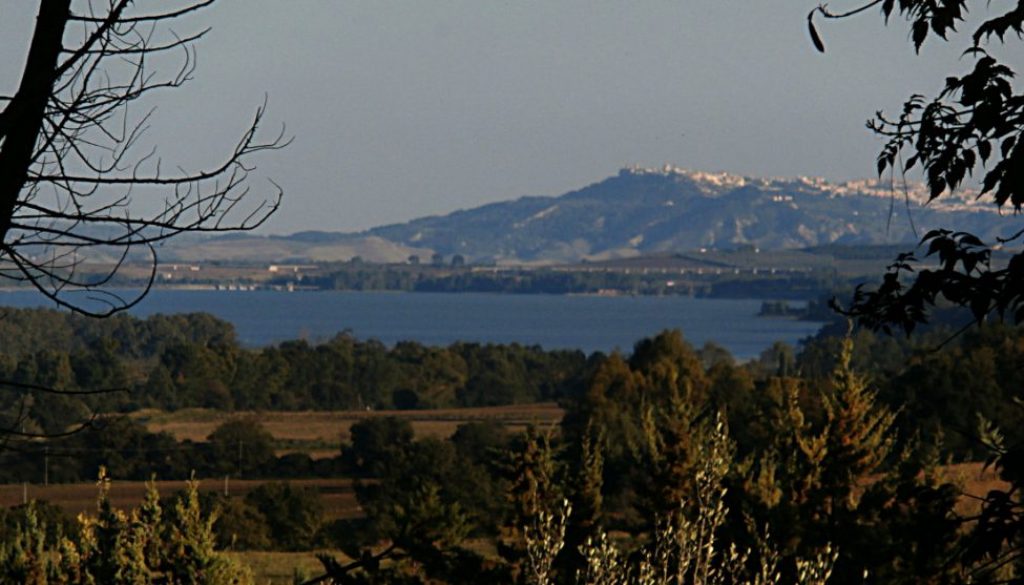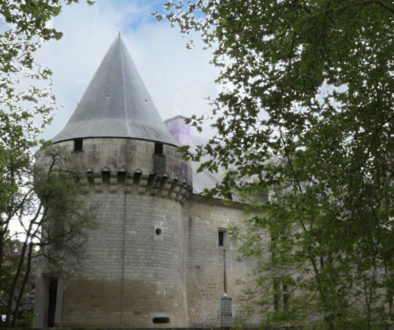FAST-CHANGING BASILICATA – WE SEARCH AND RECORD IT
24th – 28th October:
FAST-CHANGING BASILICATA – TRACKING IT KEEPS GRAHAM BUSY
We decided we must spend more time finding the rich, ever-evolving history in fast-changing Basilicata. In this period we did a lot of driving and walking around our immediate area. Graham wanted to get a real ‘feel’ for that part of Basilicata. One of the places we’d neglected was Grassano, a larger town not too far away, where Carlo Levi was first imprisoned.
FAST- CHANGING ROADS IN GRASSANO – ROUND IN CIRCLES!
Our neglect did not seem to matter, because we found Grassano disappointingly, rather uninteresting. (If we simply did not find the best bits, then we heartily apologise.) I remember quite a smart central street, which somehow, despite efforts to explore further, we kept finding ourselves back in. We always ended at the top, where there was a large ‘netted-off’ ruined zone in front of a seemingly inaccessible building. From its appearance it might have been the railway station. We kept trying various side streets, but always came back to the same street that climbed straight up the hill.
NO-ONE TO ASK
Although it was mid-morning when we arrived, we did not find a single person to ask for better directions. Nor was there a café or restaurant open.
Except – What I do remember is the laughter from a gaggle of local youths lolling outside a bar located on the side street right at the top. They collapsed with mirth each time we drove around in front of them – about three or four, as I remember. When we stopped to ask their advice, they simply waved us away. Finally, at the bottom of the town we found a way out. We took it with relief.
I have since read claims of an ancient centre with art works of distinction.
What a pity there were no directions to it (in 2016, at anyrate).
Dispirited, we set off to explore side roads in search of abandoned old MASSERIAS:
FAST- CHANGING BASILICATA – LONELY VILLAGES AND FARMS
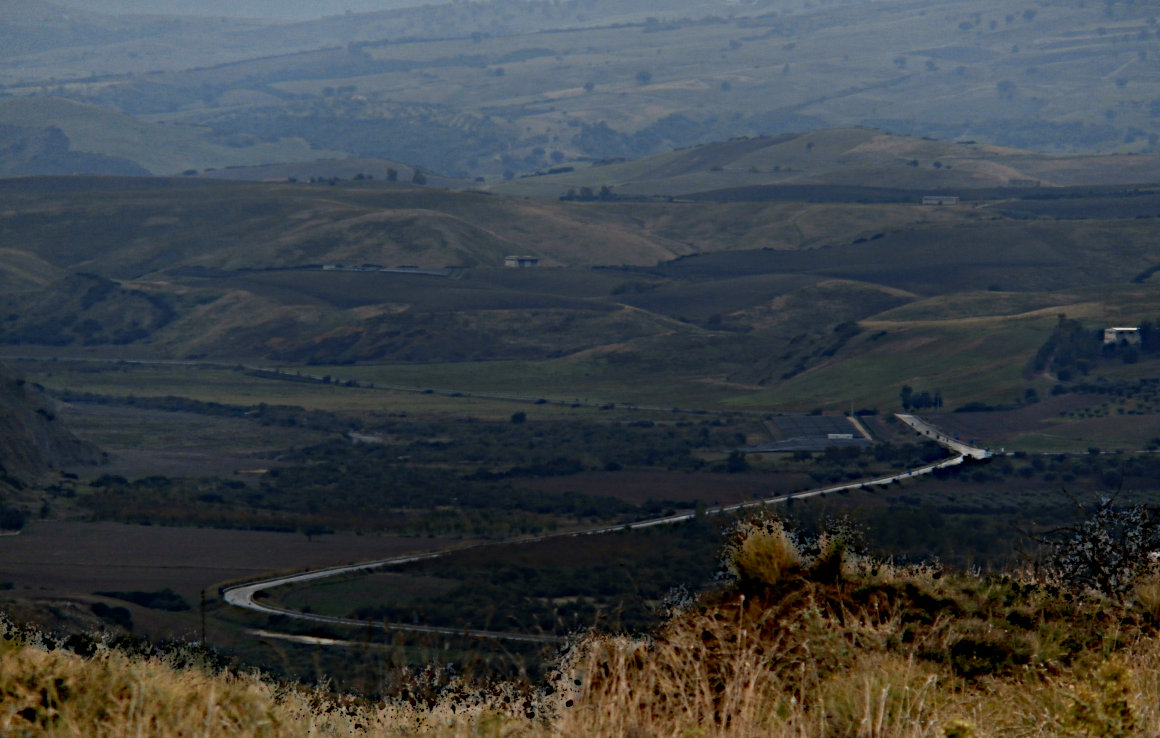
While I was still limping slightly, we went on short ‘mystery tours’ and explored tiny villages round about us. Most were either abandoned, or in a very sorry state of disrepair. Apart from one: We found a truly charming settlement at the end of a road up above the ‘end’ of the lake.
Graham also went down tiny lanes and tracks. He was searching for the many picturesque ruined farmhouses (masseria) littering that landscape. He photographed his finds in an attempt to put them on record.
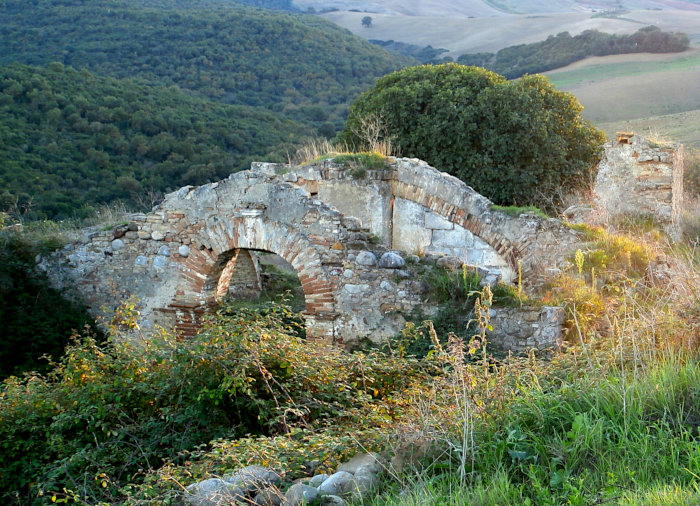
(Graham takes over here)… Giuseppe took me up above the house, past a large water storage pond, and into his newly planted grove of olive trees. To the edge of the plot there was an overgrown tangle of brambles and bushes.
THE OLD FAMILY MASSERIA
Amongst them were the remains of the old ‘Masseria Mazzapede’. From the footprint I could see that it had been a large, impressive building. Twenty metres or so further down the slope of the hillside was a walled-off area with faced stone. Giuseppe warned me not to go too close as it covered the old well: Between it and the building was unstable ground, due to landslips. That was why the building had been abandoned.
LEARNING FROM OLD PHOTOGRAPHS
Later, back at the house, he showed me a fading photograph of that Masseria. To this day I wish I’d made a copy. It was a two-storeyed farmhouse with a square pigeon tower that stood a further storey higher at one end. There was also a barn (or stable block) attached, forming it into an L-shaped plan.
FAST-CHANGING BASILICATA – OUR MENTAL GAME – RESTORING RUINS
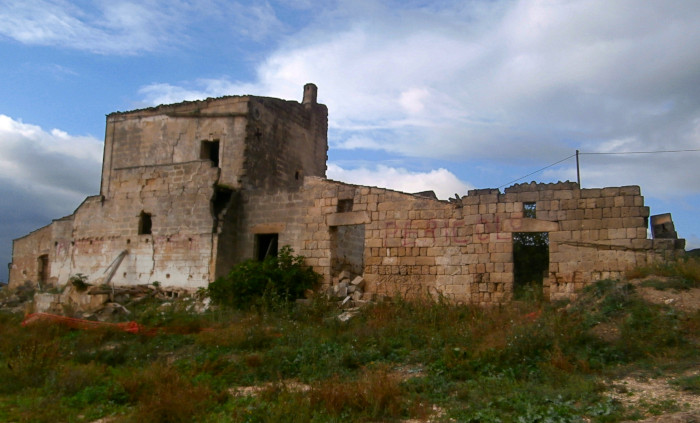
A little further afield Graham struck gold, finding many an interesting ruin to photograph. One was a truly beautiful old building, which he approached by walking up a fairly long, rutted track. It was so attractive that I followed him, in order to get a better look myself. That one was shown in the last Post.
(Graham) This one shown here, though seemingly ordinary, had some interesting features that I came across again and again throughout my wanderings in Basilicata. Before I go on to explain, let me point out the red writing sprayed on the wall:
Pericolo – danger.
I only came across warnings on buildings twice while looking around. I advise if you want to do the same, be very careful. These buildings are very unstable, due to many reasons; landslip and earthquakes being two of them. Have someone with you.
Back to the interesting thing:
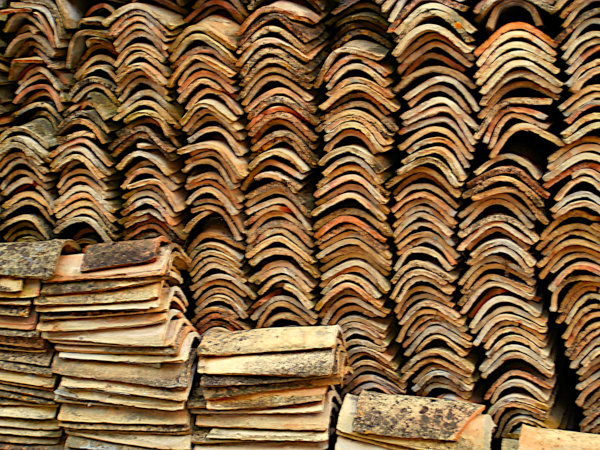
This was a lean-to section of the building (added later from all the appearances of the stonework). So I guessed that the original outer wall is where the wooden beams are leaning up against it to keep it from collapsing.
I have enlargened a section of stone that jutted out from the wall. It had a smooth circular hole about 2 -3″ in diameter bored through it.
If you look closely at the picture you will see that there are four, placed in the wall at pretty regular intervals.
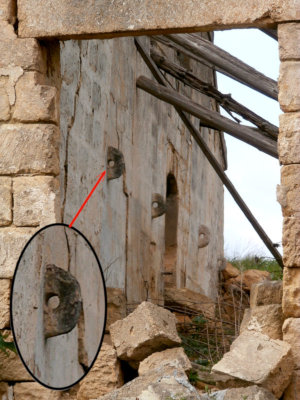
I came across these same shaped stones in walls in the Sassi in Matera; and in a few of the older towns and villages. Unfortunately I never really gave them much thought, or photographed them until I came across them here – and that was one of the last days of our stay before we left Basilicata. I’m sure they were for tieing up donkeys, before the combustion engine came along.
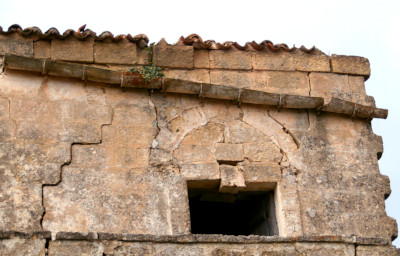
Another thing this building had was an ingenious method of guttering that is still in use everywhere we went; especially on the older buildings, which still retained their old terracotta tiles. These are in the form of a tapering half -sleeve, about 1.5 feet long. Giuseppe told me that the old ones are rare, and hold a good price. They were once made by bending a flat of clay over a man’s thigh! This is what created the ‘right taper’. Apart from covering roofs they were attached end-to-end and hung along a wall to catch the rain.
(Graham.) A rather special one that we stumbled across on the Bank Holiday is written about a little later. We glimpsed it down a tiny lane. It stood below us on the side of a hill, and looked to be in good order from the aerial sticking out of the chimneys, and some cutivated ground close by. It was situated in a sheltered valley in what in Britain would be an ideal position. This was the only one we came across that looked to be liveable. Note the beautifully fashioned chimney. (Graham)
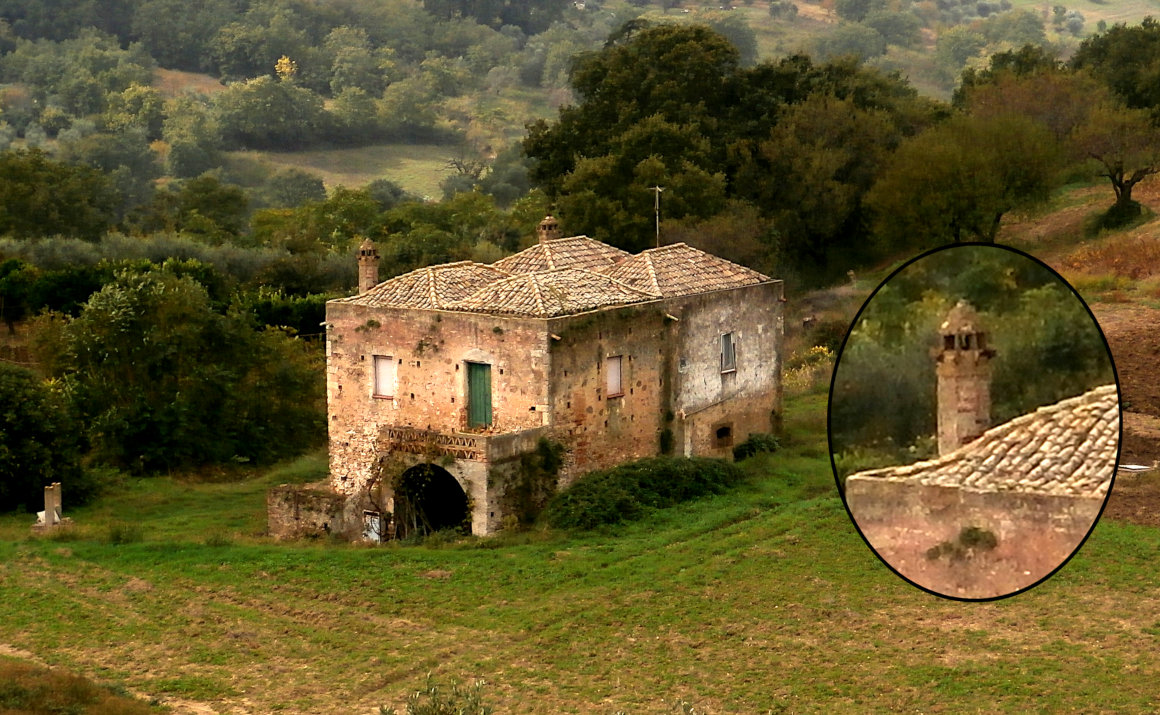
Jackie again:
“These are fast-disappearing. Gosh; I’d love to do that one up,” said Graham. “It’s really beautiful.” We went into one of our favourite fantasies – of how we would restore the building and live in it, maybe letting off part to holidaymakers… We do this all the time, knowing full well that it is just a game – but it’s one we both greatly enjoy.
FAST-CHANGING BASILICATA – LACKING THE LANGUAGE
There was an empty house Graham kept returning to. We saw it nearly every day, whenever our travels took us past Grottole. Looking rather like an abandoned railway station, it was fairly foursquare and red. I don’t quite know what he saw in it. Across the front you could just make out the faded legend Casa Cantinieria Fantavorinna. We know ‘casa’ means ‘house’, so perhaps it belonged to some lady, and the rest was her name. Or perhaps it was a ‘canteen’ – a sort of café. We shall never know. I can find no translation.
FAST-CHANGING BASILICATA – ABANDONMENT
On our way to Matera one day we turned off to look at a village visible from the road. The road sign named it as La Martella. It was mostly in a sorry state; not fully populated, and some houses falling into ruin. Maybe the inhabitants had moved into the little modern hamlet nearby. That was modest; almost like a small corner of an English 1950’s suburb, but probably more comfortable to live in. Before we reached it we saw a once-grand masseria – we discovered that it was called Santa Maria D’irsi and belonged to an important old family of the area.
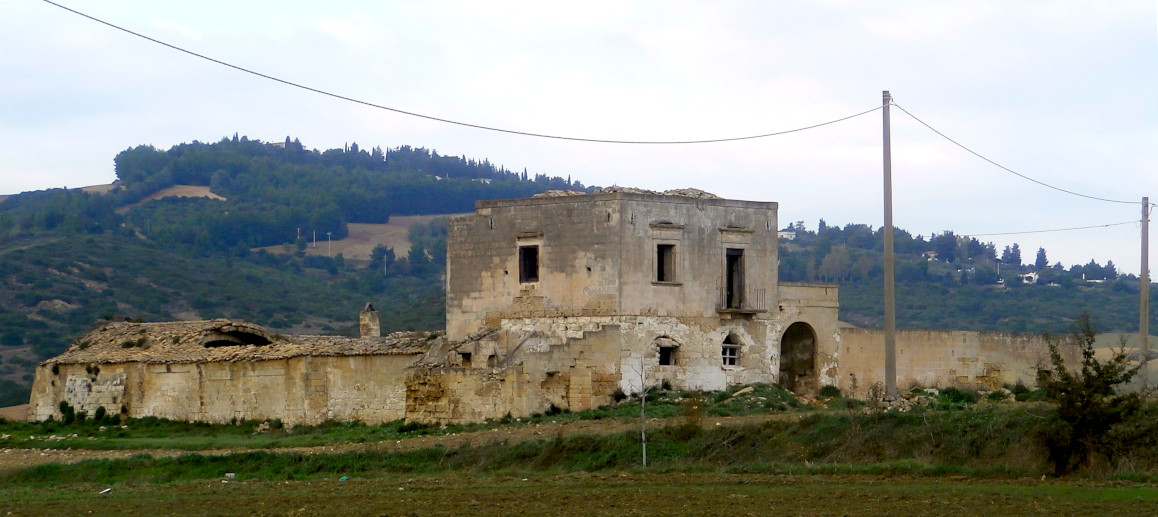
(Graham) When Jackie’s ‘lump’ had finally shrunk, I drove many more miles as we went further afield to see more of Basilicata. We came across more masseria; some small, some huge. All were in ruins, and far from the roads. Often they looked like drowning things lapped by the undulating land. I do hope that somewhere there is a small band of Italians collecting details of these buildings. Finding those faded photos and curling documents – and putting them together with what drawings can be found or made. I did ask Giuseppe if there was any society with an interest in preserving the history of such buildings. All he muttered was that everyone wanted modern houses; somewhere easy. I hope that Basilicata’s vernacular buildings are not all gone before its inhabitants wake up to mourn their passing; and find there is hardly any record left that they once housed a vibrant rural community. (Graham)
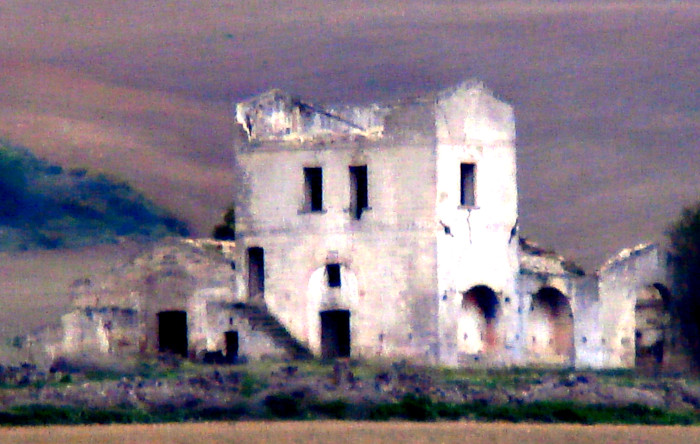
Text by – Graham & Jackie Usher, SWWJ. (aka author Debbie Darkin, & ‘Graham Liverpool’ on Trip Advisor.)
Photographs by – Graham Usher.
![]()

